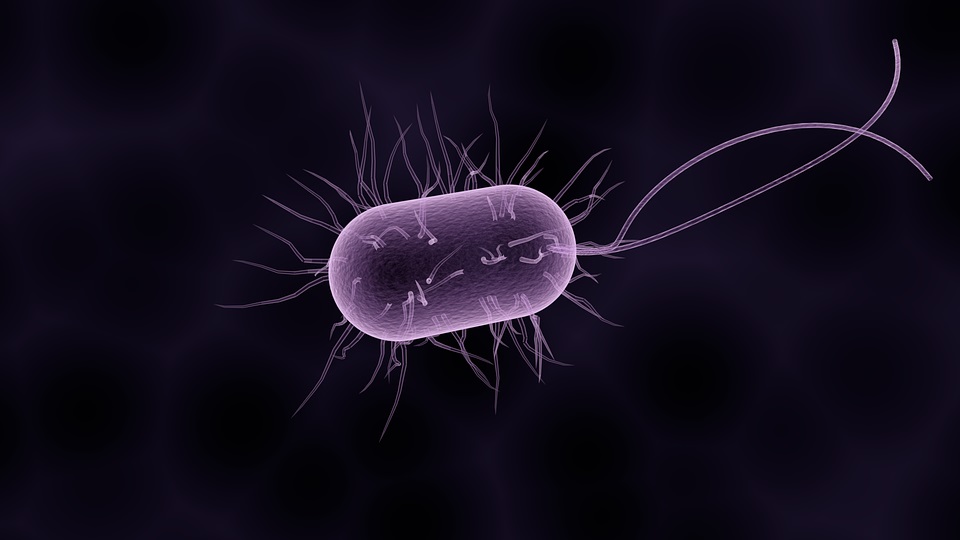The key difference between bacteria and viruses is that the bacteria can live without a host organism while the viruses cannot live without a living host.
Many people think that both bacteria and viruses are germs that are harmful to human beings. Furthermore, they think that viruses and bacteria belong to the same category that causes infections to us. However, it is a wrong perception. Bacteria and viruses are two very different infectious agents, and it is extremely important for us to know their features to be able to ward off infections and to remain healthy. This article explains the features of both as well as the difference between bacteria and viruses to make us better prepared in every sense of the word. A major difference between bacteria and viruses is that the bacteria are single-celled prokaryotic microorganisms while viruses are obligate parasitic particles that possess both living and non-living characteristics.
CONTENTS
1. Overview and Key Difference
2. What are Bacteria
3. What are Viruses
4. Similarities Between Bacteria and Viruses
5. Side by Side Comparison – Bacteria vs Viruses in Tabular Form
6. Summary
What are Bacteria?
Bacteria are unicellular organisms that are in many different shapes and sizes. They are microscopic prokaryotes of Kingdom Monera. Bacteria contain a single chromosome composed of DNA and extra-chromosomal DNA called plasmids. They live every possible habitat including the extreme environments such as hot springs and deep sea. Interestingly they can live independently without the aid of other living organisms, unlike viruses.

Figure 01: Bacteria
Furthermore, they reproduce asexually by binary fission, which is the most common reproductive method of bacteria. The most amazing fact is that, out of countless types of bacteria, most are harmless for human beings. In fact, a vast majority of bacteria are beneficial to us as they break organic matter and kill parasites. Only a few of the bacteria cause diseases to human beings.
What are Viruses?
On the other hand, viruses are not living things and have no cells. However, they possess characteristics which lie between living and non-living things such as; they can evolve and have genes but, they do not metabolize nutrients, produce and excrete wastes, and cannot move around on their own. Likewise, they are intracellular parasitic organisms that require a living host such as a plant or an animal to multiply. Hence, they penetrate the cells of a host and live inside the cells. They change the genetic code of the cells of the host that starts to produce the virus. When enough baby viruses are produced by the cell, the host cell bursts and the viruses come out and penetrate into other cells of the host. Thus, it can be said that viruses are not living things.

Figure 02: Virus Replication
They only contain RNA and DNA and proteins that start to act on the information stored when a virus finds a host cell. However, all viruses are harmful, and the only way to remain healthy is to prevent viruses from entering our bodies. Moreover, it is very difficult to destroy viruses, unlike bacteria which can kill by antibiotics. Antiviral vaccines can slow down the reproduction of viruses but cannot destroy them completely.
What are the Similarities Between Bacteria and Viruses?
- Both bacteria and viruses can be seen under the microscope.
- Also, both cause infections to human, animals, plant and other living organisms.
- However, both can be controlled by medicines.
- Besides, both types contain a genetic material within them.
What is the Difference Between Bacteria and Viruses?
Bacteria and virus are infectious agents having different properties. However, not all bacteria are harmful. Thus, only a few percentages of bacteria cause harmful effects for us. In fact, most bacteria are beneficial to a human in many ways. For example, those bacteria residing in our gut. On the other hand, viruses are only harmful. Therefore, this is an important difference between bacteria and viruses. Above all, the major difference between bacteria and viruses is that the bacteria are living organisms while the viruses are non-living particles.
We can also see a difference between bacteria and viruses in their size. Bacteria are usually 0.2 to 2 micrometres in size while viruses are 10-100 times smaller than bacteria. Another difference between bacteria and viruses is that the bacteria possess a simple cellular organization but, the viruses are acellular. The below infographic on difference between bacteria and viruses shows more differences between both.

Summary – Bacteria vs Viruses
Bacteria are unicellular microorganisms that possess a prokaryotic cellular organization. On the other hand, viruses are small infectious non-living particles which are obligate parasites and need a host to multiply. This is the key difference between bacteria and viruses. Furthermore, most bacteria are not harmful while all viruses are harmful. Also, compared to viruses (20 – 400 nm), bacteria are larger, having a size range of 200nm to 2000nm. Hence, this summarizes the difference between bacteria and viruses.
Reference:
1.Lodish, Harvey. “Viruses: Structure, Function, and Uses.” Molecular Cell Biology. 4th Edition., U.S. National Library of Medicine, 1 Jan. 1970. Available here
2.Vidyasagar, Aparna. “What Are Bacteria?” LiveScience, Purch, 23 July 2015. Available here
Image Courtesy:
1.”1832824″ by sbtlneet (CC0) via pixabay
2.”HepC replication”By GrahamColm (Public Domain) via Commons Wikimedia
ncG1vNJzZmivp6x7pbXFn5yrnZ6YsqOx07CcnqZemLyue8OinZ%2Bdopq7pLGMm5ytr5Wau26uwJyrnqqZlnqiusNmraxlpp6%2Ftr%2FErGY%3D